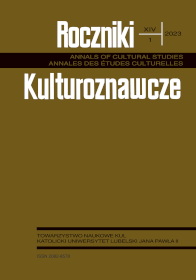EMOTION-GENERATING MECHANISMS IN TELEVISION PROGRAMMES
EMOTION-GENERATING MECHANISMS IN TELEVISION PROGRAMMES
Author(s): Joanna SosnowskaSubject(s): Media studies, Theory of Communication, Crowd Psychology: Mass phenomena and political interactions, Health and medicine and law, Sociology of Culture
Published by: Towarzystwo Naukowe KUL & Katolicki Uniwersytet Lubelski Jana Pawła II
Keywords: television; visual media; emotion; audiovisualism; pandemic;
Summary/Abstract: The aim of this article is to present the mechanisms of mediatisation of emotions in TV broadcasts in relation to the messages concerning the SARS-CoV-2 pandemic. The pandemic time has radically changed the way television works. The production of many TV programmes has been suspended around the world, and the way journalists and editorial staff work has changed, yet the viewership during the pandemic grew all over the world, despite negative emotions being generated. The study relies on a qualitative analysis of the emotion-generating mechanisms in the audiovisual image. The research material was TV programmes about SARS-CoV-2 in March–June 2020. The research tools used permitted an analysis of the content of the message and its formal side (sound, image, graphics, music). The final results were divided into two areas of emotiongenerating mechanisms: formal (forms) and thematic (content). The analysis shows that especially negative emotions were evoked in TV programmes during the pandemic: threat, sadness and fear. At the level of form, the following mechanisms were revealed: visual enhancement, gradation, giving meaning, contrast and generalization. In terms of content mechanisms, one can observe the mechanism of drama, content accumulation (blocking), exposure, variable dynamics of positive and negative content, and narrative mechanisms. The observed mechanisms of generating emotions may also lead to manipulation of the recipient through the repetition of negative information or the use of authorities. The conducted analysis confirmed the importance of combining form and content as well as strength, rhythmization and repetition of specific messages in the audiovisual message. The article may be the basis for research on the relationship between emotions and cognition, as well as research on the reception of audiovisual content.
Journal: Roczniki Kulturoznawcze
- Issue Year: 14/2023
- Issue No: 1
- Page Range: 57-82
- Page Count: 26
- Language: English

